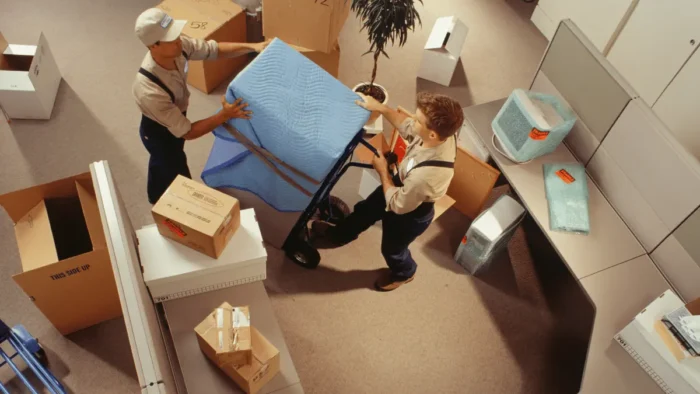Whether you are a small startup or an established corporation, relocating your office space is a significant undertaking that requires careful planning and execution. A successful office move can improve productivity, team morale, and operational efficiency. However, without proper preparation, it can quickly turn into a chaotic and stressful experience.
Here, we’ve compiled a comprehensive guide with essential tips and strategies to ensure your office relocation goes smoothly. Join us as we explore the crucial steps to make your move seamless and successful!
Plan and Coordinate
An office move’s success hinges on meticulous planning and seamless coordination. Firstly, thoroughly assess the office move requirements, including space needs, equipment, and logistics. Next, establish a detailed timeline with key milestones and deadlines. Designate an internal move coordinator to oversee the entire process and liaise with professional movers and vendors.
Effective communication between all parties is crucial to avoid misunderstandings and delays. Regular meetings should be held to track progress, address challenges, and make necessary adjustments. By collaboratively organizing the move, you ensure a well-executed transition that minimizes disruptions and sets the foundation for a smooth relocation to the new office space.
Get a Storage Space
Consider renting a self-storage unit as a valuable asset during an office move. These units provide additional space to temporarily store non-essential items, archive documents, and surplus furniture, minimizing clutter and streamlining the moving process. Before the move, declutter the office by identifying items that can be safely stored off-site.
Research nearby storage facilities that offer secure, climate-controlled units of appropriate size. Consider finding storage that’s accessible 24/7, with a reliable surveillance system in place for added security. Additionally, check for facilities with flexible rental terms to accommodate your specific storage needs. Label and organize items to be stored for easy retrieval later.
Utilize the self-storage unit to create a more efficient and organized moving environment, allowing for a smoother transition and ensuring that essential items are prioritized during the relocation.
Budget and Allocate Resources
Creating a well-defined budget and allocating resources appropriately are critical aspects of a successful office move. Begin by thoroughly assessing the financial requirements of the relocation, including moving expenses, professional services, new office setup costs, and potential contingencies. Obtain multiple quotes from moving companies and service providers to compare prices and services.
Allocate resources strategically, considering factors like personnel involvement, specialized equipment needs, and necessary permits. Identify cost-saving opportunities without compromising the quality of the move. Effective budgeting and resource allocation ensures that the move remains within financial constraints while meeting the organization’s needs and objectives for the new office space.

Efficient Pack and Organize
An organized and systematic packing approach is essential for a smooth office move. Start by decluttering the office space to minimize the items to be moved. Categorize and label boxes based on their contents, making unpacking and setting up in the new office easier. Utilize appropriate packing materials, such as sturdy boxes, bubble wrap, and packing tape, to ensure the safety of delicate equipment and documents.
Develop a packing timeline, prioritizing essential items for immediate use at the new location. Involve employees in the packing process, assigning specific responsibilities to streamline the task. An efficiently packed and organized move reduces the chances of misplaced or damaged items, simplifying the transition to the new office.
Back up Data and Critical Files
Data security is paramount during an office move. Before the relocation, ensure that all critical files and data are securely backed up. Implement a robust data backup strategy that includes both on-site and off-site backups. Consider using cloud-based storage solutions for added redundancy and accessibility. Conduct thorough testing of data restoration procedures to verify the integrity of the backups.
Additionally, communicate data backup protocols to employees, emphasizing the importance of safeguarding sensitive information throughout the move. By prioritizing data protection, the organization can mitigate the risk of data loss or security breaches and ensure business continuity during and after the office move.
Communicate and Engage Your Employees
Open and effective communication with employees ensures a successful office move. From the early planning stages, keep employees informed about the move’s details, timelines, and reasons for the relocation. Address their concerns and questions promptly, fostering a sense of involvement and ownership in the process. Encourage feedback and suggestions, making employees feel valued and heard.
Organize town hall meetings, webinars, or virtual Q&A sessions to facilitate two-way communication. Provide comprehensive information about the new office’s amenities, facilities, and commuting options, helping employees envision their future workspace. Engaged employees are more likely to embrace the change positively, leading to a smoother and more successful transition.
Conclusion
Executing a perfect office move requires meticulous planning, efficient coordination, and thorough communication. Organizations can minimize disruptions and ensure a smooth relocation by following essential tips and strategies, such as budgeting wisely, packing and organizing effectively, and safeguarding critical data.
Engaging and communicating with employees throughout the process fosters a positive transition and boosts their morale. With careful preparation and a focus on the well-being of employees, the office move can lead to a successful and seamless start in the new workspace.





